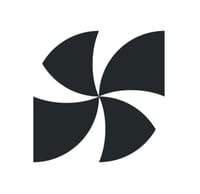How did you become a photographer and what genre of photography do you enjoy most?
I grew up in a family of amateur photographers and studied photography at Art School as part of my Bachelor of Fine Arts degree at Canterbury University but I didn’t really start photographing as a serious hobby until I moved to the South Coast in Wellington where there is an abundance of native birds and shorebirds.
Native birds of Aotearoa New Zealand, many of them with a conservation status of ‘at risk’ or ‘declining’ are my main area of expertise. I predominantly photograph in the Wellington region which has a huge variety of Native birds and also at Zealandia Ecosanctuary which is an incredible conservation resource as well as an incredible place to photograph - I’ve recently started volunteering there on a casual basis.

Why is photography and sharing your work important to you?
I enjoy walking and immersing myself in nature - one of the most important aspects of my photography is to tell a story, transmit an emotion in my images, capture the character of the subject. I often include additional information, particularly if it is unique or an at risk species.
New Zealand is home to 168 Native birds. Despite the serious commitment and conservation efforts in New Zealand it was reported in 2020 that endemic birds are at a higher risk of extinction than 40 years ago. About 64% have declined in Conservation status.
Where have your images been used so far?
Zealandia has used some of my bird images for their publications which I donated free of charge. Occasionally I’ve had requests for the use of an image like a Stoat for a cause I support like Predator Free NZ or an article on conservation/trapping.
I’m hoping that my images will be used to educate and hopefully inspire others to learn more about our native birds.

Do you use Social Media platforms to promote your work? How are these platforms beneficial to you?
I mainly use Instagram and the Excio app to promote my work. I've met many other bird photographers and conservationists through these platforms - it’s been a useful source of information. Just yesterday I visited Plimmerton in Wellington to photograph a Black Tern as a local photographer had provided information on his sighting there - it was reported to be the first sighting in New Zealand. This tiny migratory Tern is likely to have travelled from Europe, Western Asia, and North America. It had gained quite a Paparazzi of twitchers by that day. It was great to meet people, some of whom had travelled from as far as Rotorua and Auckland hoping to sight it. I loaned one man a battery for his camera as his wasn’t charged - he later provided me look out for the Black Tern with another photographer which was a huge help given how challenging it was to spot amongst 1000 plus White-fronted Terns. In turn, I’m happy to share locations of interest that are on my radar with people that I’m confident will behave responsibly and not unnecessarily encroach on or disturb wildlife.
Can you tell us about your most popular photos?
One of my most popular photos is of a Rare Leucistic or white Native Tui feeding on the yellow pollen of Harakeke blooms. Leucism is a genetic mutation that results in a total or partial reduction of colour in a bird’s plumage. A Leucistic bird has the pigments or normal amount of melanin, but these pigments are inadequately fixated or fail to be deposited properly in the feathers. Leucistic birds usually have a normal colouration of the eyes, bill, legs, and bare parts but interestingly this Tui has reduced coloration in her eyes, bill, and legs.








